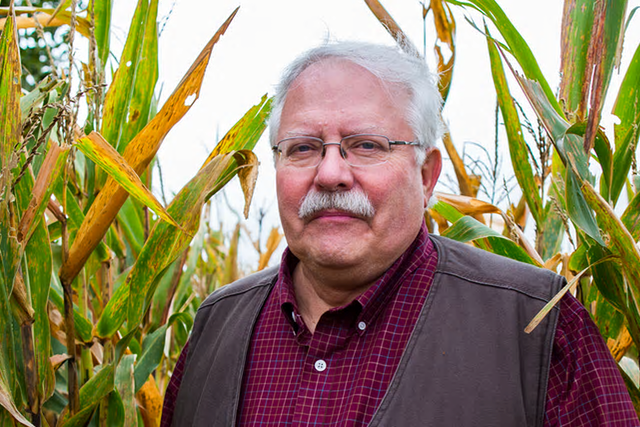Farmers are dying in mass numbers from apparent suicides. Little is spoken of at large in regards to this crisis, but a few have stood together to address this tragic loss of life.
Ginnie Peters discovered this resource under tragic circumstances while searching for answers after her husband committed suicide.
After his death, Ginnie began combing through Matt’s things. “Every scrap of paper, everything I could find that would make sense of what had happened.” His phone records showed a 20-minute phone call to an unfamiliar number on the afternoon he died.
When she dialed the number, Dr Mike Rosmann answered.
“My name is Virginia Peters,” she said. “My husband died of suicide on May 12th.”
There was a pause on the line.
“I have been so worried,” said Rosmann. “Mrs Peters, I am so glad you called me.”
Rosmann, an Iowa farmer, is a psychologist and one of the nation’s leading farmer behavioral health experts. He often answers phone calls from those in crisis. And for 40 years, he has worked to understand why farmers take their lives at such alarming rates – currently, higher rates than any other occupation in the United States.

Dr Mike Rosmann is considered to be the foremost U.S. expert of farm behavioral science and the farmer suicide crisis
Rosmann left academia and the city to walk the walk as it related to his ever-increasing academic warnings on the suicide cries threatening America’s homegrown food sources.
Mike appears a midwestern Santa Claus – glasses perched on a kind, round face; a head of white hair and a bushy white moustache. In 1979, Mike and Marilyn left their teaching positions at the University of Virginia in Charlottesville and bought 190 acres in Harlan, Iowa – near Mike’s boyhood farm. When he told his colleagues that he was trading academia for farm life, they were incredulous.
“I told them farmers are an endangered species, and we need them for our sustenance. I need to go take care of farmers, because nobody else does,” says Rosmann. Once back in Iowa, the Rosmanns farmed corn, soybeans, oats, hay, purebred cattle, chickens and turkeys. Mike opened a psychology practice, Marilyn worked as a nurse, and they raised two children.
He shares how the farming crises we see today started to unfold way back in the 1980s,
In the 1980s, America’s continuing family farm crisis began. A wrecking ball for rural America, it was the worst agricultural economic crisis since the Great Depression. Market prices crashed. Loans were called in. Interest rates doubled overnight. Farmers were forced to liquidate their operations and evicted from their land. There were fights at grain elevators, shootings in local banks. The suicide rate soared.
As the president of the Kansas Farmers Union, Donn Teske puts it “What we went through in the 1980s farm crisis was hell, “I mean, it was ungodly hell.”
In the spring of 1985, farmers descended on Washington DC by the thousands, including David Senter, president of the American Agriculture Movement (AAM) and a historian for FarmAid. For weeks, the protesting farmers occupied a tent on the Mall, surrounded the White House, marched along Pennsylvania Avenue. Farmers marched hundreds of black crosses – each with the name of a foreclosure or suicide victim – to the USDA building and drove them into the ground. “It looked like a cemetery,” recalls Senter.
It was out of this crisis that Dr. Rosmanm’s vision was born. Head on over to the next page to hear how his work is helping thousands of farmers see hope at the end of the tunnel.

A Trump supporter calling someone ignorant
HAHAHA
Liberals, just when you think they can’t get any dumber they go and prove you wrong.
Probably could read whole article if stupid survival technics would stop sensoring it so I can’t read it. Thanks FB. I see again you do that want us to know the truth. Leave the articles alone.
I don’t think they are killing themselves I think they are being killed…
I don’t believe this headline at all.
Yes, it in infuriating to have the stupid ad pop up so you can’t read the entire article! Done on purpose so censor? I have complained about it several times but FB doesn’t take it down.
So American can import food from China, India and rest countries
INDIAN’S from India and many other countries farmers are doing the same thing. Government regulations of requirements of genetic altered seed to get more fruiting etc. And rules and regulations on how they are extorted to use what the government programs force ,are putting them into slavery and as servants. These seeds are sterile after the first crop and these folks are at the government’s mercy if they want to survive. This is the munipulation the government forces to get control of every citizen and their lands . No self sufficient citizen in the world is valuable because they must have the heel in their backs ,submission!
Praying for our Farmers.Hard working folks.
THIS IS LIBERAL PROPAGANDA